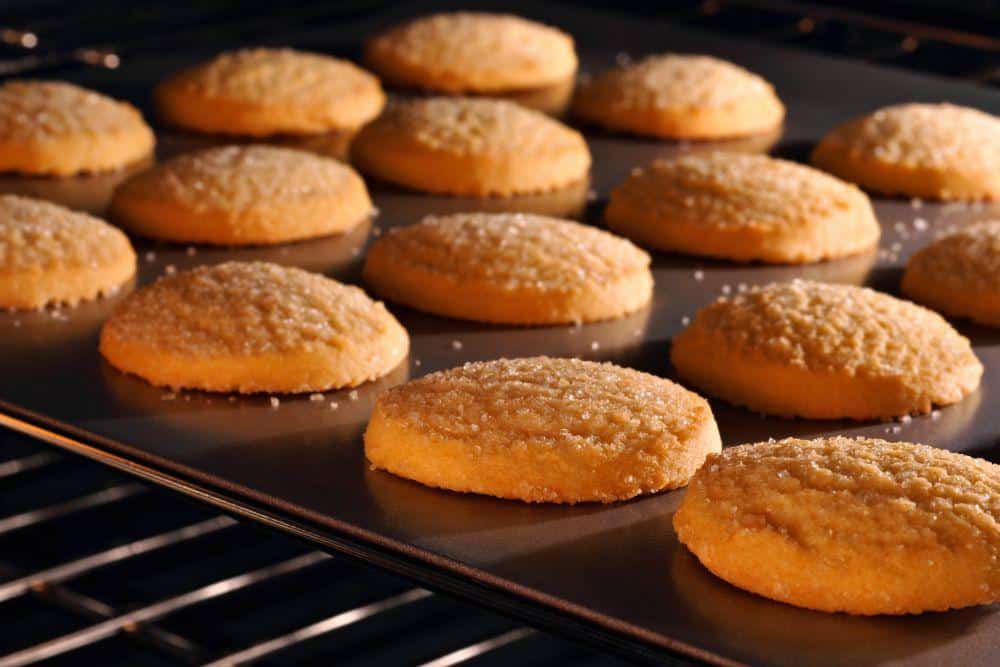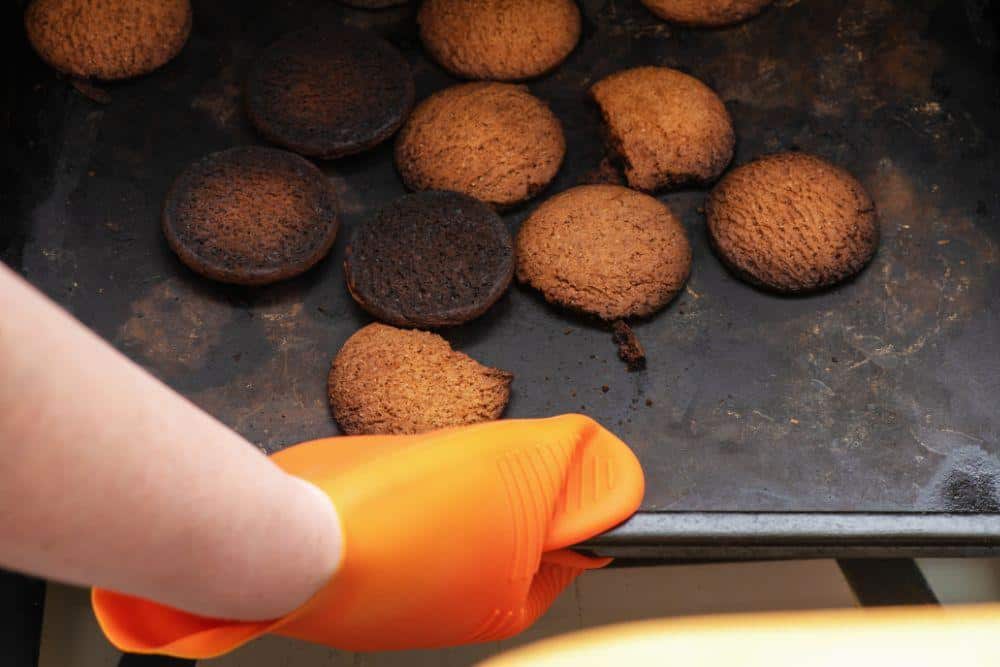You can certainly use a cookie sheet on the stove, but you shouldn’t. It can be dangerous and tough to do effectively without burning the food or the sheet. After all, cookie sheets are meant for the insides of ovens, not to be directly exposed to flames and/or high heat.
So, can you use a cookie sheet on the stove? Our answer is no. We can’t stop you, and it may work for you, but it is a bad idea.

A Cookie Sheet is Meant to Be Used in an Oven - at Relatively Low Temperatures and May Not be Able to Handle Intense Stovetop Heat
Not all cookie sheets are the same. Some implements, like Nordic Ware, are made from aluminum. Some manufacturers make their cookie sheets from durable and heat-resistant metals. Common cookie sheet materials include:
Any of Them.
Stainless Steel
Stainless steel is a somewhat poor conductor of heat, but this works in its favor. It is also quite durable. Most ovenware products are made in part with stainless steel for this reason. Stainless steel is less apt to bend than materials like cast iron. Likewise, stainless steel can withstand higher temperatures than aluminum and only melts beyond 2500 degrees Fahrenheit.
Although stainless steel has the material properties to endure the stovetop, a stainless steel cookie sheet shouldn’t be used. At the end of the day, a stainless steel cookie sheet is meant for oven heating. It will heat unevenly on the stovetop and could result in hazardous spills onto your stove.

Using the Stovetop with a Cookie Sheet is Risky and May Result in Spills, Accidents, or Poorly Cooked Food
Aluminum
Aluminum cookie sheets would likely result in a disaster on the stovetop. Aluminum is a thin, brittle material that is very quick at conducting heat. All of these qualities make it a horrible pick for a stovetop container.
Aluminum trays are prone to melting at high temperatures. The metal coils on oven burners can reach over 1000 degrees Fahrenheit. Aluminum melts at 1200º Fahrenheit, as opposed to iron or steel, which both tend to melt at over 2000º Fahrenheit.
No, do not cook glass cookie trays on the stovetop. Glass trays, cake tins, and containers, in general, should not be exposed to open flames. They will shatter.
Why are they so fragile? Glass products are physically incapable of transmitting heat as good as metals. Heat moves through glass slowly. While one side of the glass is hot, the other is much cooler.
Naturally, the heated side of the glass wants to expand. Because of the difference in force, the glass may break, ruining both the meal and its container.
While you can possibly be successful using a cookie sheet on the stove, we’re not going to provide details on how to do so. It is too dangerous and can cause injury to you, your cookie sheet, and/or your house.
It is impossible to bake food on the stove with only a cookie sheet. Baking something is a physically different process than grilling, roasting, or any other form of stovetop cooking. Baking requires a closed environment.
When someone bakes the food, heat from all over the inside of the oven cooks it from the outside in. This process allows them to cook the meal thoroughly and evenly from the outside in. Cooking food on a stove means it will only receive heat from one direction.
The problem lies in the heat transfer between the burner and the tray. When a burner shoots flames directly into the sheet, it can weaken the metal and cause it to melt. Cookie sheets and baking sheets are much thinner than frying pans and do not spread heat energy very well.
Cookie sheets are meant to endure the heat in an oven. Inside the oven, heat disperses from all sides and into the metal. These sheets perform much worse when in direct contact with a flame. Too much heat becomes concentrated in too small of an area.
Most stoves have four burners. These four burners are where most of the heat will emit from underneath the cookie sheet. This setup means the cookie sheet will get hotter in the four areas of the tray over the burners. Because of this, the meal may also cook incorrectly.
Consider that melted metal can end up stuck to the stove. If someone cooks with a cooking sheet incorrectly, parts of it may end up fused to the burners. Not only is it a waste of a meal and money, but it is also potentially disastrous for the stove.
Other issues may emerge as:
Warping is a term that refers to melting, bending, or softening metal utensils with a flame. Most of the time, it is minor. However, there are times when the metal is so warped it can be impossible to use that pan again.
This annoying surprise is common with thin cookie sheets. Because they have less thickness to distribute the heat properly,
Warping is most common when people leave their trays unattended or fail to notice burn marks early on. Fortunately, it is pretty easy to prevent. Buying thicker cookie sheets will do the trick.
One doesn't have to be a chef to know there are plenty of crafty substitutes for frying pans. When someone asks “Can you use a cookie sheet on the stove?”, point them to some of these alternatives:
It is crucial to monitor these utensils while the stove is cooking. Using a baking sheet on a stovetop in place of a pan has its share of difficulties and risks.
